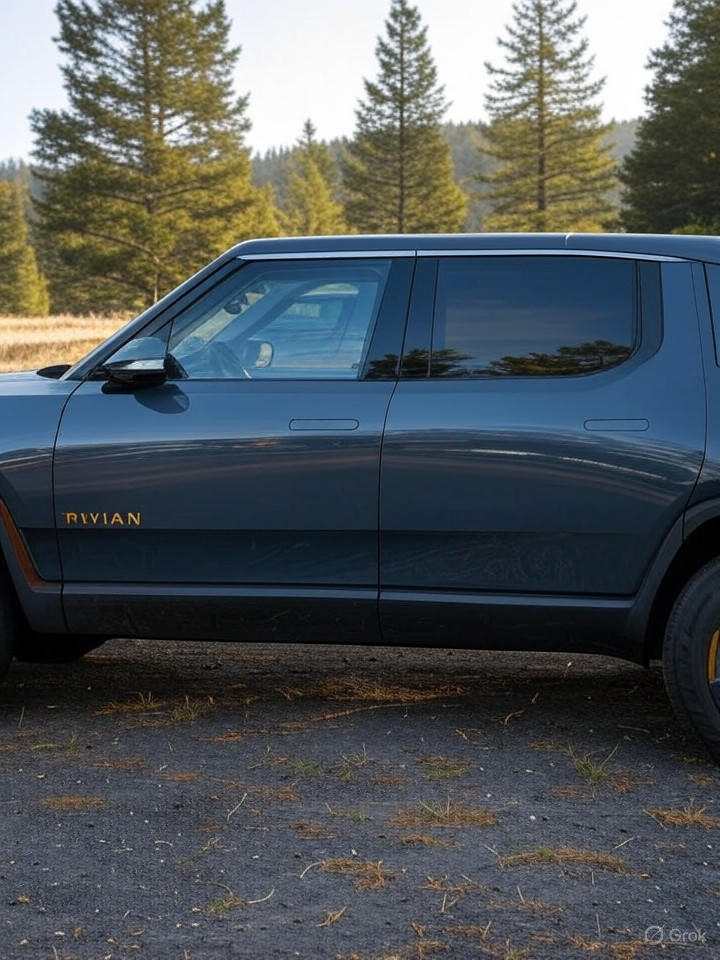Rivian’s Ongoing Struggle for Profitability
Rivian Automotive Inc., the electric-vehicle maker backed by Amazon.com Inc., is facing mounting hurdles on its road to profitability, as recent financial disclosures reveal a widening gap between ambitions and reality. In its latest quarterly earnings, the company reported a net loss of $1.1 billion for the second quarter of 2025, an improvement from the previous year but still indicative of deep-seated challenges in scaling production and managing costs amid a turbulent market for EVs.
The Irvine, California-based firm has been vocal about its goal to achieve gross profitability, yet policy changes and supply chain disruptions continue to erode progress. According to a report from Yahoo Finance, Rivian’s path to breaking even has extended, with executives now projecting a modest gross profit only by the end of 2025, if at all, due to factors like increased tariffs on imported components and the phasing out of certain EV tax credits that previously buoyed demand.
Impact of Policy Shifts and Market Dynamics
These external pressures are compounded by internal operational issues. Rivian has maintained its vehicle delivery guidance for 2025 at between 40,000 and 46,000 units, but analysts note that this flat outlook reflects softening consumer interest in EVs amid high interest rates and economic uncertainty. A recent earnings call transcript highlighted by Investing.com underscores continued profitability challenges, including a wider-than-expected earnings per share loss and the need for substantial capital investments to fuel growth.
Industry insiders point out that Rivian’s struggles mirror broader trends in the electric vehicle sector, where pioneers like Tesla Inc. have set high bars, but newcomers grapple with razor-thin margins. Supply chain bottlenecks, particularly for batteries and raw materials, have forced Rivian to slash costs aggressively, yet the company still reported a negative gross profit margin of -4.31% in Q2, as detailed in an analysis from Investing.com.
Strategic Moves and Production Ramp-Up
To counter these headwinds, Rivian is betting big on its next-generation vehicles, including the R2 model, which promises to broaden its appeal with more affordable pricing. The company has expanded its manufacturing footprint, as evidenced by recent announcements on X from Rivian’s official account about scaling production in the U.S. and creating jobs, emphasizing a commitment to local communities and advanced technology.
However, regulatory hurdles and competitive pressures remain formidable. A strategic assessment from Ainvest describes a complex interplay of cost reductions and innovation, noting that while Q2 revenue showed stability, the path to R2 profitability hinges on navigating policy impacts like potential tariffs that could inflate costs by up to 20%.
Investor Sentiment and Future Outlook
Investor confidence has been tested, with Rivian’s stock fluctuating amid these reports. Benchmark analysts, as reported in the same Investing.com piece, maintain a “Buy” rating, citing management’s reaffirmation of breakeven gross profit expectations for the full year, aligned with their models. Yet, posts on X from industry watchers reflect mixed sentiment, with some praising Rivian’s production milestones—such as exceeding 2023 guidance—while others express concern over persistent losses.
Looking ahead, Rivian’s vision for sustainable transportation, as outlined in a Medium article by Shah Mohammed, positions it as a disruptor revolutionizing electric adventure. But achieving profitability will require not just operational efficiency but also favorable market conditions. Reuters coverage from earlier in 2025 noted Rivian’s projection of a drop in deliveries but modest gross profit through cost efficiencies, a narrative that has evolved into cautionary tales of extended timelines.
Broader EV Industry Trends in 2025
The electric vehicle market in 2025 is characterized by intensified competition and evolving consumer preferences, with established players like Ford Motor Co. and General Motors Co. also adjusting strategies amid slowing growth. Rivian’s experience highlights a sector-wide pivot toward cost discipline, as seen in CBT News reports from late 2024 about supply chain challenges, where Rivian aimed for its first gross profit but fell short due to disruptions.
Innovation remains key, with Rivian investing in in-house technologies like motor production to reduce dependencies. A Datafloq article on Rivian’s rise emphasizes its innovative approach to sustainable mobility, yet financial realities demand prudence. As The Verge reported on Rivian’s first positive gross profit quarter in late 2024, the company expected flat sales in 2025—a prediction now overshadowed by wider losses from tariffs and lost incentives, per Yahoo Finance.
Path Forward: Risks and Opportunities
For Rivian to thrive, experts suggest diversifying revenue streams, perhaps through partnerships like its Amazon deal for delivery vans. Seeking Alpha’s coverage of the Q2 earnings call signals breakeven potential, maintaining delivery guidance despite headwinds, which could stabilize investor faith if executed.
Ultimately, Rivian’s journey encapsulates the high-stakes gamble of the EV industry: balancing ambitious sustainability goals with fiscal viability. While challenges persist, strategic pivots and technological edges could yet steer it toward profitability, setting a precedent for emerging automakers in a rapidly changing arena.




 WebProNews is an iEntry Publication
WebProNews is an iEntry Publication